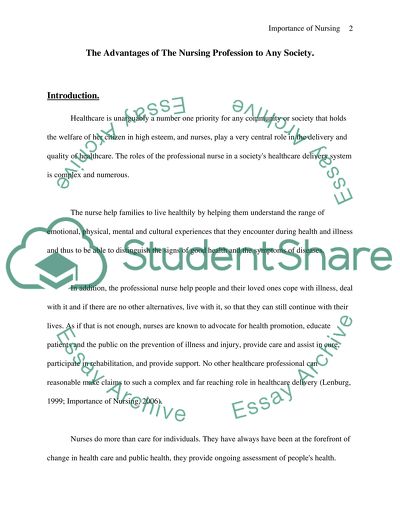Cite this document
(“The advantages of the nursing profession to any society Essay”, n.d.)
The advantages of the nursing profession to any society Essay. Retrieved from https://studentshare.org/nursing/1518056-the-advantages-of-the-nursing-profession-to-any-society
The advantages of the nursing profession to any society Essay. Retrieved from https://studentshare.org/nursing/1518056-the-advantages-of-the-nursing-profession-to-any-society
(The Advantages of the Nursing Profession to Any Society Essay)
The Advantages of the Nursing Profession to Any Society Essay. https://studentshare.org/nursing/1518056-the-advantages-of-the-nursing-profession-to-any-society.
The Advantages of the Nursing Profession to Any Society Essay. https://studentshare.org/nursing/1518056-the-advantages-of-the-nursing-profession-to-any-society.
“The Advantages of the Nursing Profession to Any Society Essay”, n.d. https://studentshare.org/nursing/1518056-the-advantages-of-the-nursing-profession-to-any-society.


